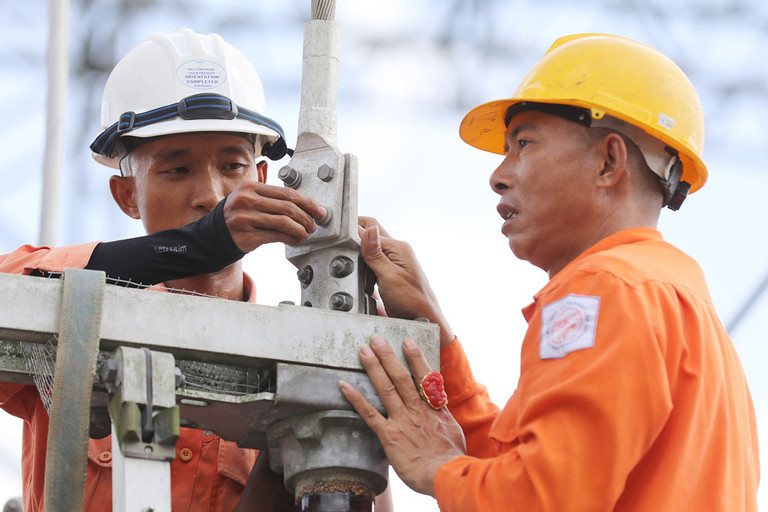
MOIT, at the Steering Committee on Price Management, proposed adjustment of electricity retail prices in 2024, so that prices can cover production costs and all expenses, thus helping EVN have enough resources to make payments to power plant owners.
EVN reported a loss of VND17 trillion last year despite retail prices increasing twice.
In 2022-2023, EVN incurred a loss of VND38 trillion, not including the exchange rate gaps carried forward from previous years of VND14 trillion.
Speaking at the EVN’s year-end conference on January 2, Nguyen Anh Tuan, CEO of EVN, said the electricity production costs of the group in 2023 was VND2,092.78/kwh, but it had to sell electricity at just VND1,950/kwh.
It had to buy electricity from its subsidiaries and other power generators at VND1,620/kwh on average.
“The expenses to buy electricity accounted for 80 percent of the prices, which is abnormal,” Tuan said.
In other countries, maximum electricity production costs are just 40-50 percent, while the remaining 50-60 percent is paid for transmission, distribution and other activities. In Vietnam, the figure is 80 percent, leaving only 20 percent for other expenses, affecting the financial balance sheet.
Stressing that EVN is in difficult financial situation, EVN president Dang Hoang An said if financial resources cannot improve, this will affect the company’s wage fund, and many qualified workers may have to resign from their posts.
MOIT has asked EVN to urgently build a 2-part electricity pricing scheme, including the capacity price and electrical energy price, and specify the clients to be covered by the scheme.
The Electricity Regulatory Authority of Vietnam said two-part electricity pricing is applied in most countries in the region and world.
The application of an additional element of a capacity price (VND/kwh, or VND/kVA) will encourage clients to use electricity more effectively. It will bring benefits to clients and ensure the recovery of production costs and investment.
Luong Bang